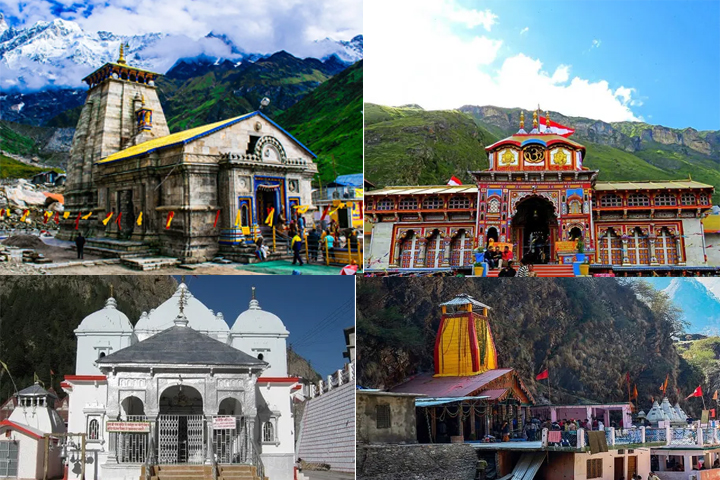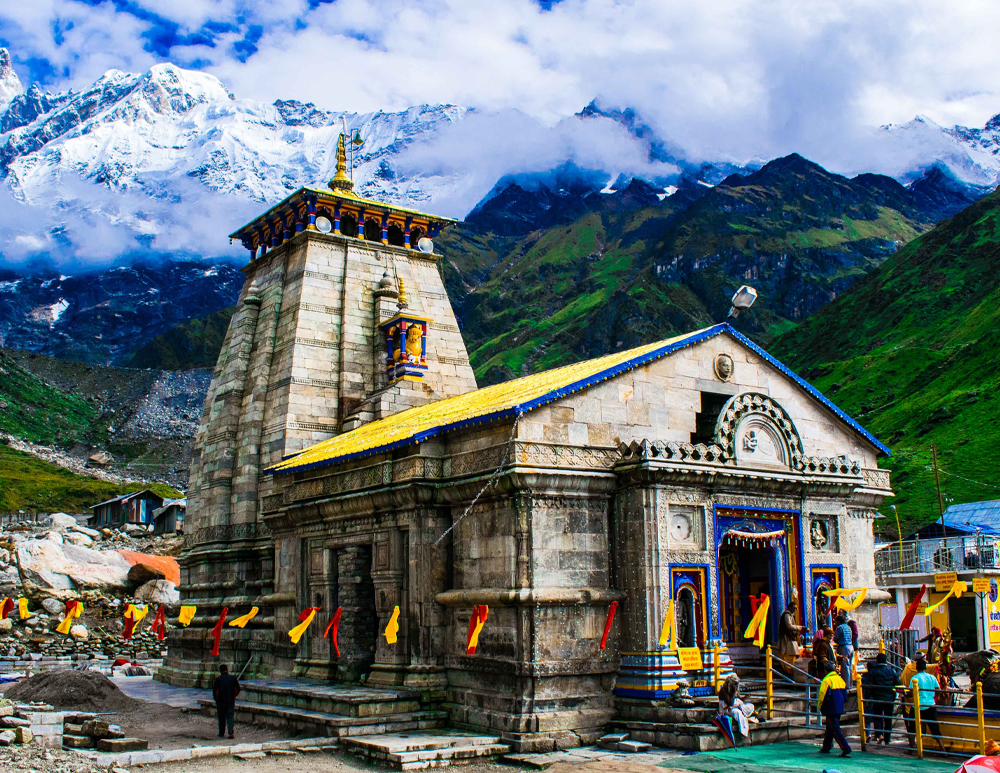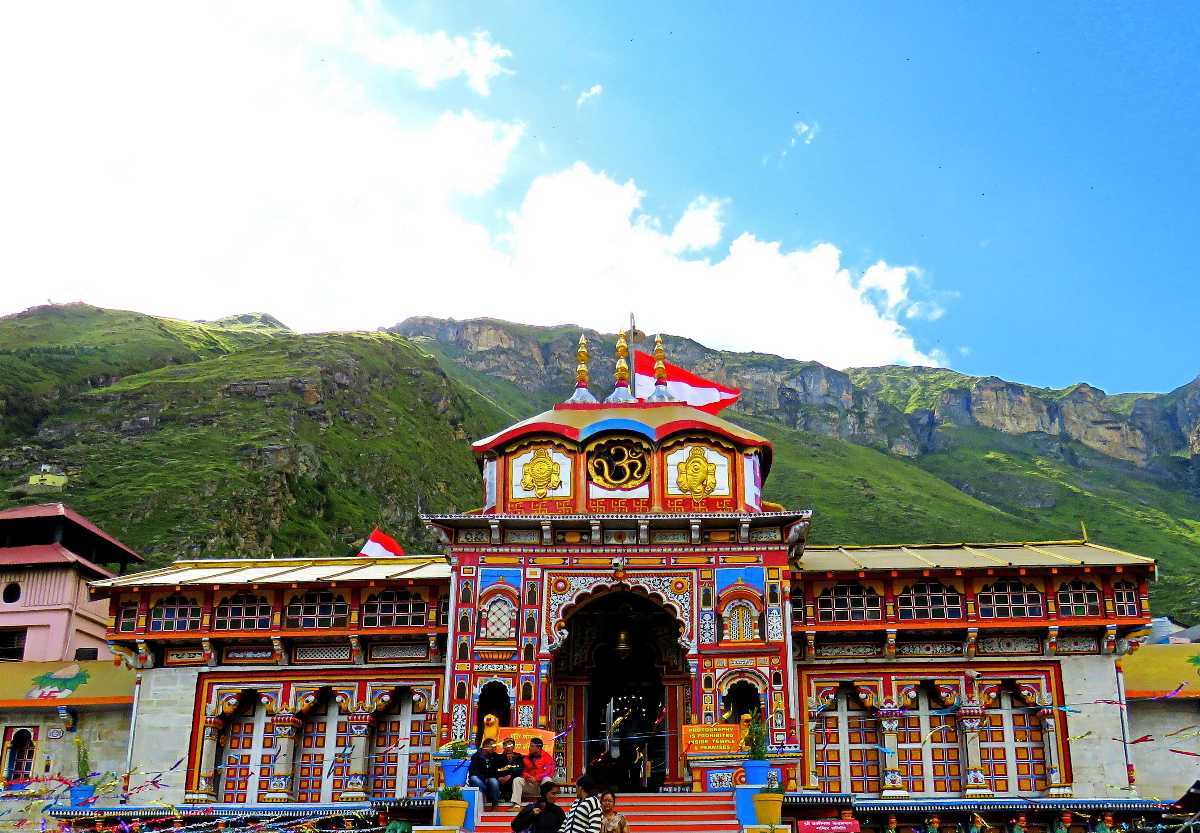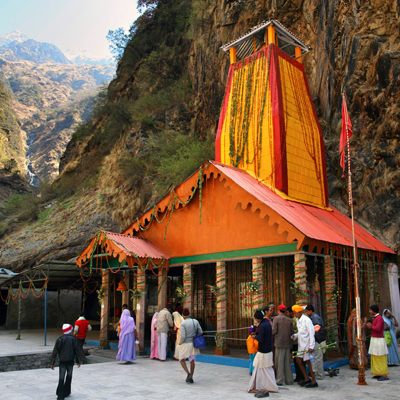The Char Dham refers to a set of four pilgrimage sites in the Indian state of Uttarakhand. These four sacred sites are considered highly significant in Hinduism, and pilgrimage to these places is believed to cleanse one’s sins and lead to salvation. The Char Dham sites are:
Yamunotri: Situated in the western Garhwal Himalayas, Yamunotri is the source of the Yamuna River. The main attraction here is the Yamunotri Temple dedicated to Goddess Yamuna.
Gangotri: Located in the Uttarkashi district, Gangotri is the origin of the Ganges River. The Gangotri Temple is dedicated to Goddess Ganga, and it is one of the most important pilgrimage sites for Hindus.
Kedarnath: Situated in the Rudraprayag district, Kedarnath is home to the famous Kedarnath Temple. Dedicated to Lord Shiva, it is one of the twelve Jyotirlingas and is accessible only by a trek or on horseback.
Badrinath: Located in the Chamoli district, Badrinath is dedicated to Lord Vishnu. The Badrinath Temple, also known as the Badrinarayan Temple, is an important pilgrimage site and is one of the Char Dham.
The Char Dham Yatra, or pilgrimage, typically starts from Yamunotri and proceeds to Gangotri, Kedarnath, and finally Badrinath. Pilgrims embark on this journey to seek spiritual enlightenment and purification. The yatra usually takes place during the months of April to November, as the region becomes inaccessible due to heavy snowfall during the winter months. Thousands of devotees and tourists undertake this pilgrimage each year, making it one of the most significant and revered journeys in Hinduism.
The Char Dham refers to a set of four pilgrimage sites in the Indian state of Uttarakhand. These four sacred sites are considered highly significant in Hinduism, and pilgrimage to these places is believed to cleanse one’s sins and lead to salvation. The Char Dham sites are:
Yamunotri: Situated in the western Garhwal Himalayas, Yamunotri is the source of the Yamuna River. The main attraction here is the Yamunotri Temple dedicated to Goddess Yamuna.
Gangotri: Located in the Uttarkashi district, Gangotri is the origin of the Ganges River. The Gangotri Temple is dedicated to Goddess Ganga, and it is one of the most important pilgrimage sites for Hindus.
Kedarnath: Situated in the Rudraprayag district, Kedarnath is home to the famous Kedarnath Temple. Dedicated to Lord Shiva, it is one of the twelve Jyotirlingas and is accessible only by a trek or on horseback.
Badrinath: Located in the Chamoli district, Badrinath is dedicated to Lord Vishnu. The Badrinath Temple, also known as the Badrinarayan Temple, is an important pilgrimage site and is one of the Char Dham.
The Char Dham Yatra, or pilgrimage, typically starts from Yamunotri and proceeds to Gangotri, Kedarnath, and finally Badrinath. Pilgrims embark on this journey to seek spiritual enlightenment and purification. The yatra usually takes place during the months of April to November, as the region becomes inaccessible due to heavy snowfall during the winter months. Thousands of devotees and tourists undertake this pilgrimage each year, making it one of the most significant and revered journeys in Hinduism.
Day 1: Haridwar to Barkot
Day 2: Barkot to Yamunotri and back
Day 3: Barkot to Uttarkashi
Day 4: Uttarkashi to Gangotri and back
Day 5: Uttarkashi to Guptkashi
Day 6: Guptkashi to Kedarnath and back
Day 7: Guptkashi to Badrinath
Day 8: Badrinath to Joshimath
Day 9: Joshimath to Rishikesh/Haridwar
Day 10: Departure
Day 1-Haridwar to Barkot
Depart from Haridwar towards Barkot, which is the base for the Yamunotri Yatra.
The drive takes you through beautiful landscapes and passes by the holy confluence of rivers Yamuna and Tons.
Overnight stay in Barkot.
Day 2-Barkot to Yamunotri and back
Early morning, drive to Hanuman Chatti, from where you’ll start a trek or ride a pony/doli to reach Yamunotri temple.
After darshan at Yamunotri, return to Barkot in the evening.
Overnight stay in Barkot.
Day 3-Barkot to Uttarkashi
Drive from Barkot to Uttarkashi, which is the base for the Gangotri Yatra.
Uttarkashi is known for its serene environment and is home to several temples.
Overnight stay in Uttarkashi.
Day 4-Uttarkashi to Gangotri and back
Drive to Gangotri, the source of the holy river Ganga (Ganges).
After visiting the Gangotri temple and taking a holy dip in the river, return to Uttarkashi.
Overnight stay in Uttarkashi.
Day 5-Uttarkashi to Guptkashi
Depart from Uttarkashi to Guptkashi, the base for the Kedarnath Yatra.
The journey offers breathtaking views of the Himalayas.
Overnight stay in Guptkashi.
Day 6-Guptkashi to Kedarnath and back
Start early for a drive to Gaurikund, from where you’ll trek or ride a pony/helicopter to reach Kedarnath.
Visit the Kedarnath temple and pay your respects.
Return to Guptkashi in the evening.
Overnight stay in Guptkashi.
Day 7-Guptkashi to Badrinath
Drive to Badrinath, the final destination on the Char Dham Yatra.
Visit the Badrinath temple and other nearby attractions.
Overnight stay in Badrinath.
Day 8-Badrinath to Joshimath
Explore Badrinath in the morning and depart for Joshimath in the afternoon.
Joshimath is a picturesque town and a significant religious center.
Overnight stay in Joshimath.
Day 9-Joshimath to Rishikesh/Haridwar
Start your journey back to Rishikesh or Haridwar.
En route, visit Narsingh Temple and Vishnu Prayag.
Reach Rishikesh or Haridwar by evening.
Overnight stay in Rishikesh or Haridwar.
Day 10-Departure
Depending on your travel plans, you can either depart from Rishikesh/Haridwar or spend an additional day exploring these towns.
By Air :-
Dehradun’s Jolly Grant Airport is the airport serving Dehradun, located approximately 25 km from the city. There is a daily flight from Delhi to Dehradun. Come at some point early if you are making plans to return home via flight.
By Train :-
Take a one-day trip from Delhi to Dehradun.
- Nandadevi Express – Train no: 12205 (Departure 11:50pm; Arrival – 5:40am)
- Dehradun Express – Train no: 12687 (Departure – 9:10pm; Arrival – 5:00am)
By Bus:-
There is a normal bus provider from Delhi to Dehradun and from Delhi to ISBT Kashmere Gate. We would recommend you take the most effective government buses from ISBT Kashmere Gate. Private buses ply from outdoor ISBT and they’re now no longer agreeable with worthiness. Usually, buses drop you at Dehradun ISBT. From there, you need to come to Dehradun Railway Station.
Includes
- Meals during the trek
- Transportation from Dehradun to Sankri and back to Dehradun.
- Dinner on arrival day in Sankri
- Forest Permits/Camping Charges (only if availing transportation through A1 Himalayas). Included only up to amount charged for Indian Nationals
- Tents, Sleeping bags, mats
- Safety Equipment includes static rescue rope, seat harness, carabiners, pulleys
- Trek guide, cook, helpers, porters & mules for carrying common luggage
- Services of a Certified Trek Leader
Excludes
- Meals during road journeys
- Carriage of Personal Bags during the trek
- Any kind of Insurance
- Any expense of personal nature
- Any expense not specified in the inclusion list.
Note :
Normally a1himalayas expect to carry your personal luggage on your own, if you wish to offload your backpack, you can give it to Mule.
Charges of offloading backpack:- Contact Us
The backpack cannot weigh more than 11 kgs. Backpack should have waterproof cover. Suitcases/strolleys/ bags will not be allowed.
Paying the Trek /Tour fee:
The fee can be paid by online transfer/Check deposit/Cash deposit/Demand draft. Instruction for payment will be forwarded along with your confirmation email. When your transfer is done, please e-mail us a confirmation mail with your transfer details, so that we can follow up your reservation efficiently.
1) Trekking Shoe/Snow Shoe
2) Rucksack/Back Pack
3) Rucksack cover (Waterproof)
4) Daypack/Knapsack
5) Undergarments/Innerwear
6)Woolen socks
7) Woolen gloves
8) Waterproof gloves
9) T-shirt
10) Trek pants
11) Camp sandal
12) Balaclava/Woolen skull
cap/Monkey Cap
13) Sun cap/Wide-brimmed
Hat/Bandana
14) Walking Sticks/Trekking
Poles/Ski Poles
15) Heavy Jacket
16) Windproof Jacket/Wind
Cheater
17)Raingear/Poncho/Waterproof clothing
18) Water bottle/Hydration pack
19) Sunscreen lotion
20) Sunglasses
21) ChapStick/Cold &
Moisturizing cream
22) Toothbrush and toothpaste
23) Towel
24) Hand sanitizer
25) Tissue roll ( Toilet)
26) Anti Fungal Powder
27) Torch/Head Lamp with extra batteries
28) Knee cap
29) Camera with extra cells
30) Dry food items
31) Personal first-aid kit
32) Medicines (This is a simple
guide line and a doctor’s
consultation is recommended.)
Altitude is a risk. Before you begin the trek, you should be aware of the effects of high altitude on your body. Acute Mountain Sickness (AMS) symptoms include a moderate headache, nausea, and overall discomfort.
Reponse: If you have any of these symptoms, notify the trek leader immediately and follow his advice. To deal with the scenario, each campsite contains a stretcher, a fully prepared first aid kit, and oxygen cylinders.
Weather Risk : No one can guarantee snow, rain, or sunlight, even if we keep a constant eye on the weather. Please keep in mind that your safety is our primary priority, and if the weather isn’t cooperating, we won’t leave the campsite.
Response: The choice to go or wait for better weather will be made solely by the Trek Leaders and Guides.
Risk: Injury is a possibility. While trekking across difficult terrains, minor injuries such as calf sprains, bruising, and other minor ailments are prevalent. Serious injuries, such as fractures or significant cuts, are quite uncommon.
Response: All of our Trek Leaders are trained in wilderness first aid. They’ve been taught to deal with emergencies and have a well-stocked first-aid equipment to deal with minor injuries. In the event of major injuries, the patient is carried to the nearest road-head on a stretcher and taken to the nearest medical facility.
DO’S AND DON’TS ON A TREK
1. Alcohols or any other intoxicating products ‘’STRICTLY PROHIBHITED’’
during the trek.
2. Always pay heed to the trek guides or instructors.
3. Try not to leave the group under any circumstances.
4. Avoid trekking during the nights as it is extremely dangerous.
5. Avoid using earphones as that might hinder your hearing.
6. Do not participate or encourage littering of the places in any form.
7. While visiting the local villages and tourist sites, obey the local guidelines
and instructions.
8. Do not harm or interrupt the local sentiments of the places.
IMPORTANT:
Your safety is of paramount concern while traveling with A1 Himalayas.
Please note that your leader has the authority to amend or cancel any part of
the itinerary if it is deemed necessary due to safety concerns. Since adventure
entails traveling in remote mountainous regions, we cannot guarantee that we
will not deviate from it. Weather conditions, health condition of a group
member, unexpected natural disasters, etc., can all contribute to changes in
the itinerary. The leader will try to ensure that the trip runs according to plan,
but please be prepared to be flexible if required.





